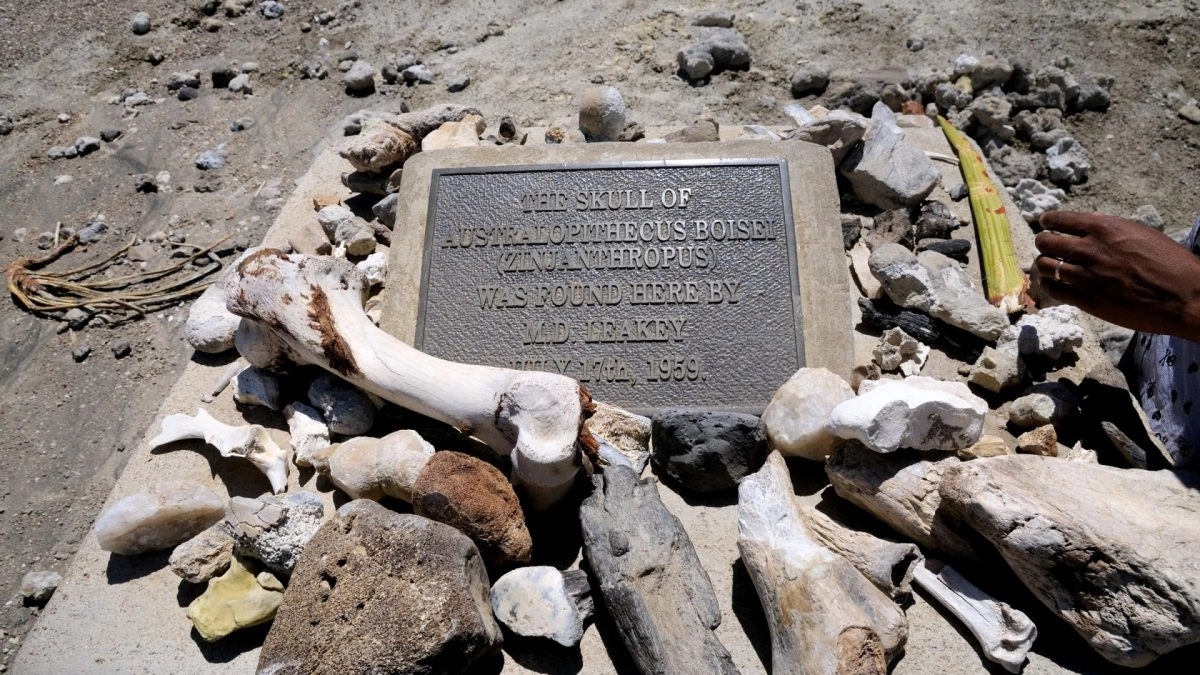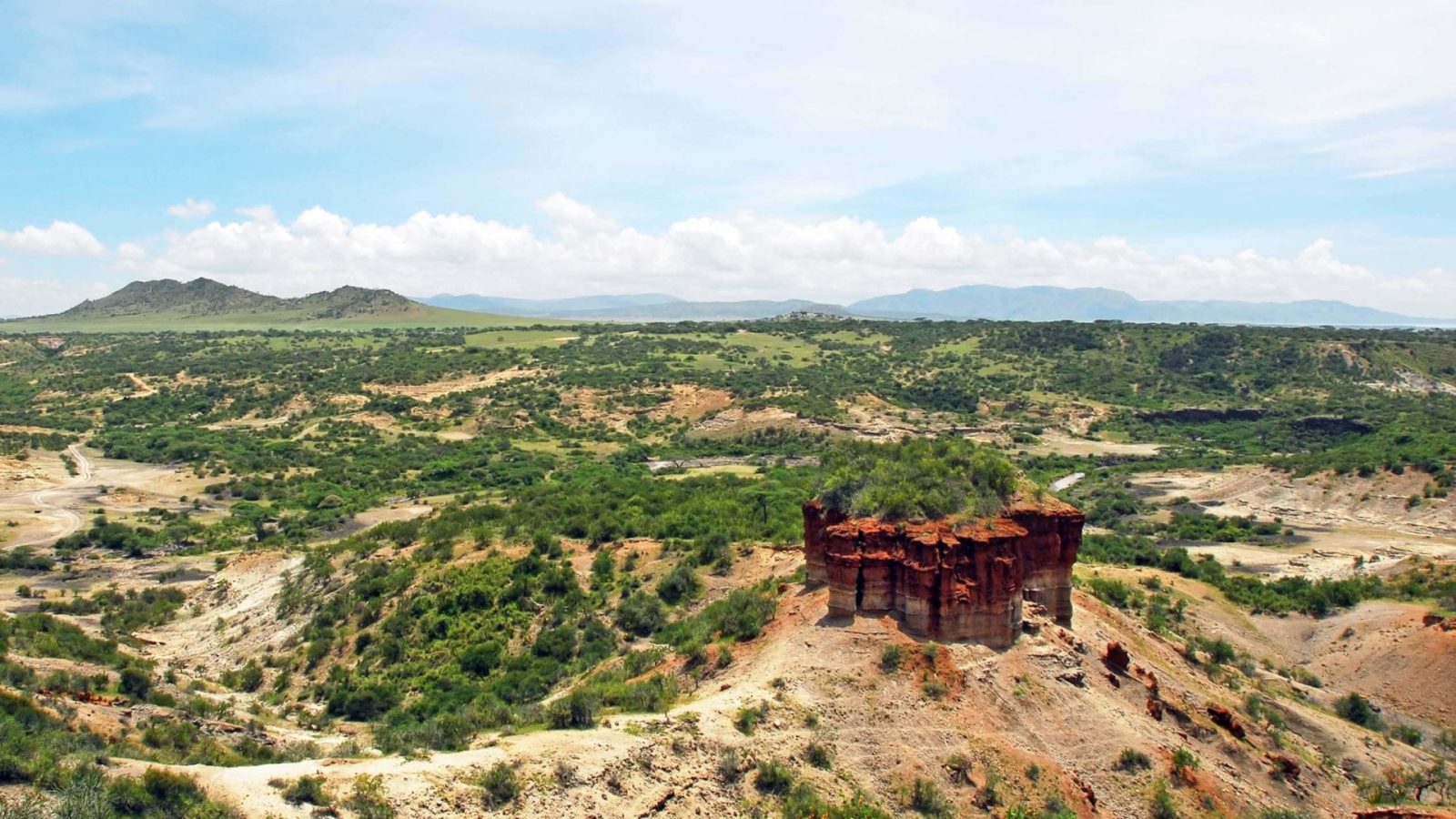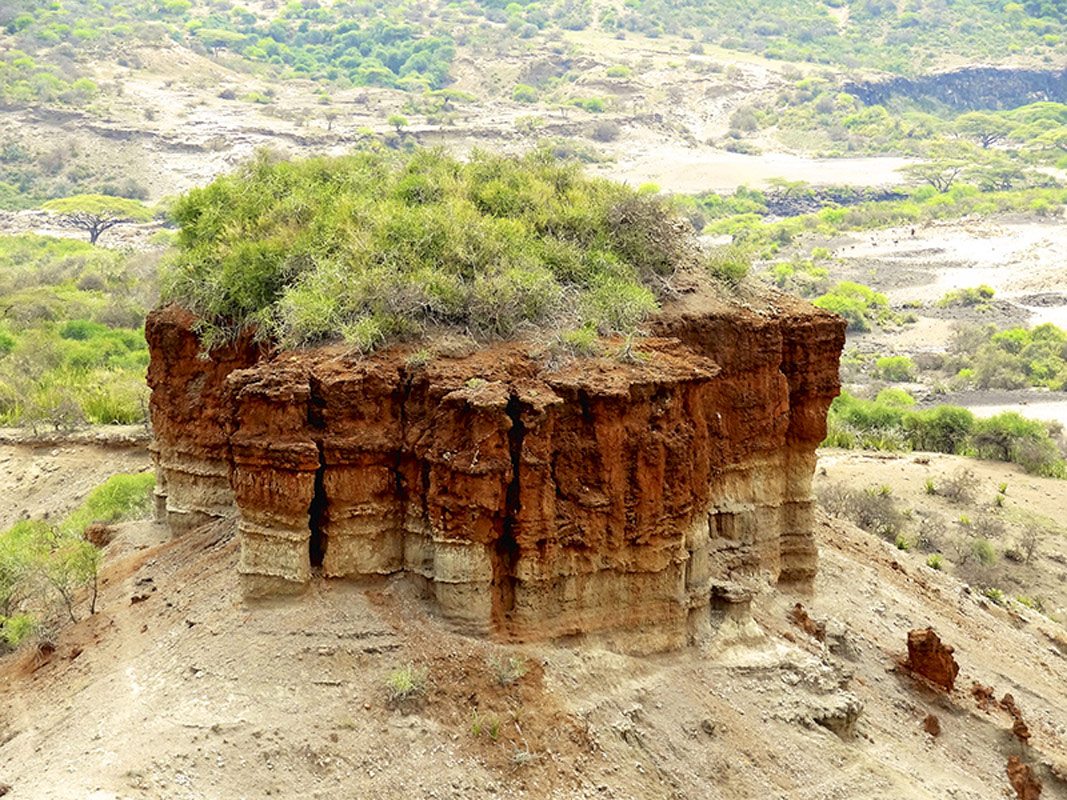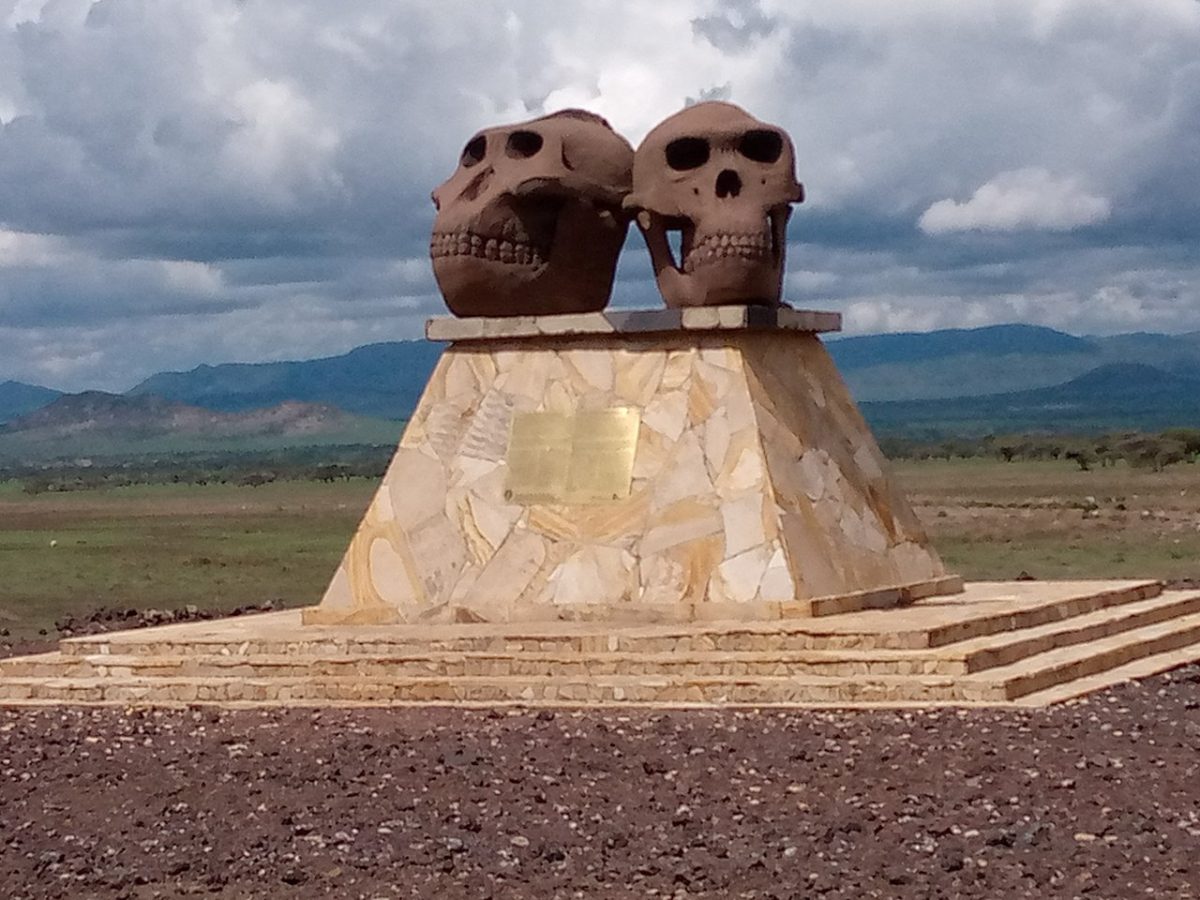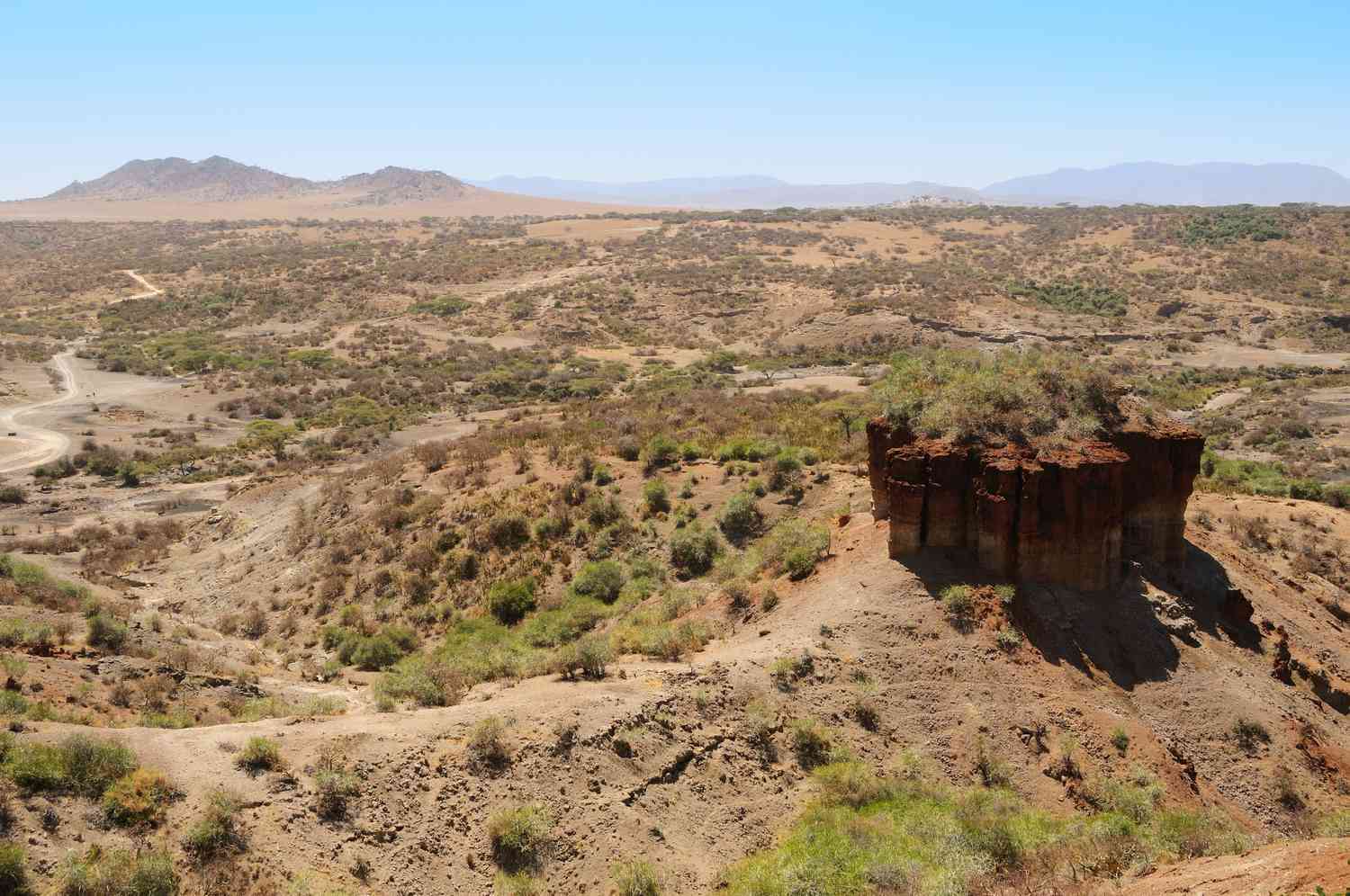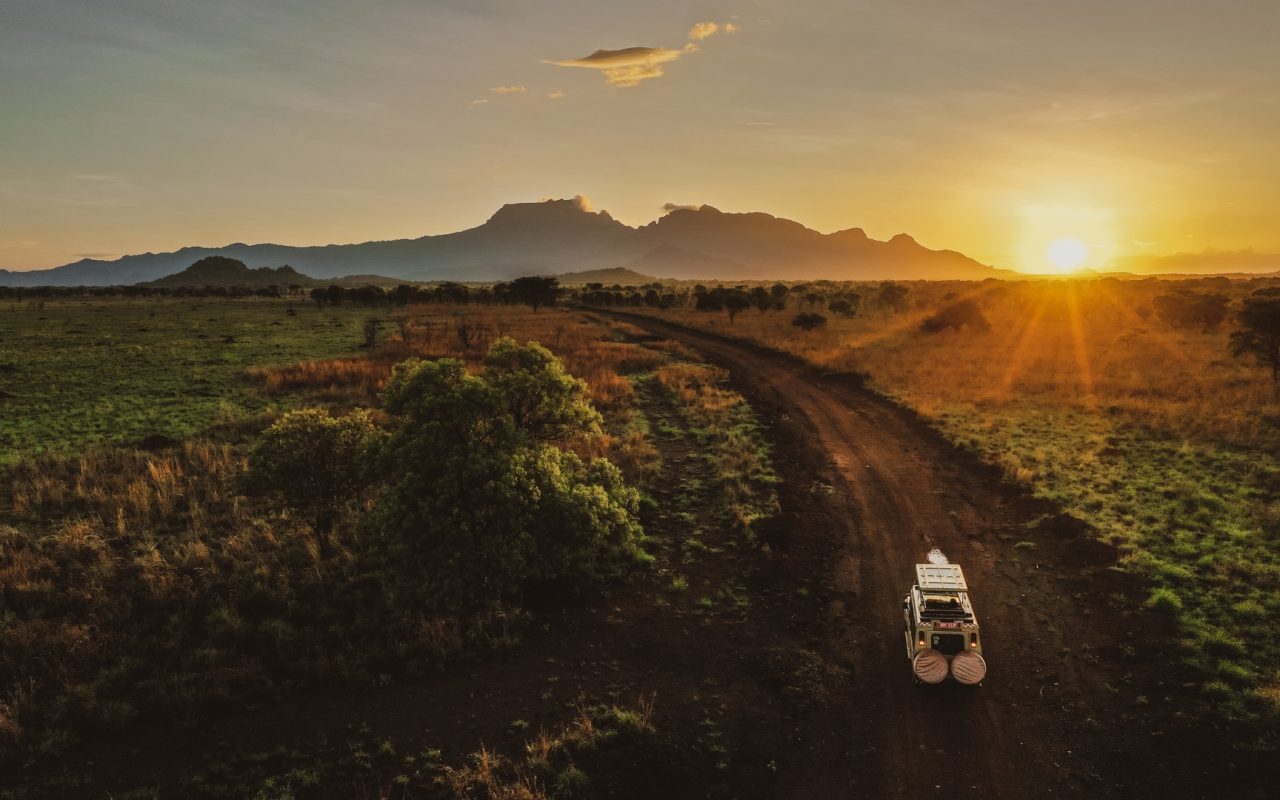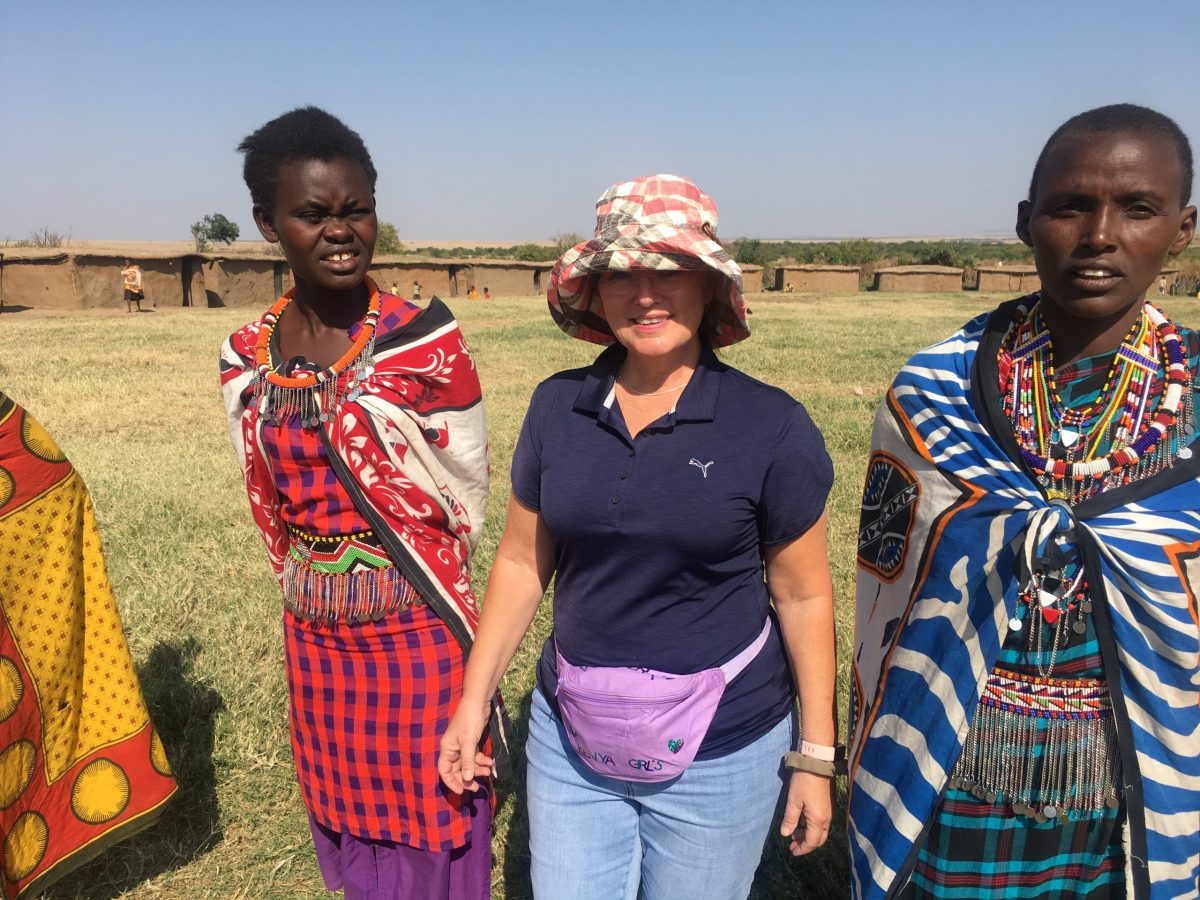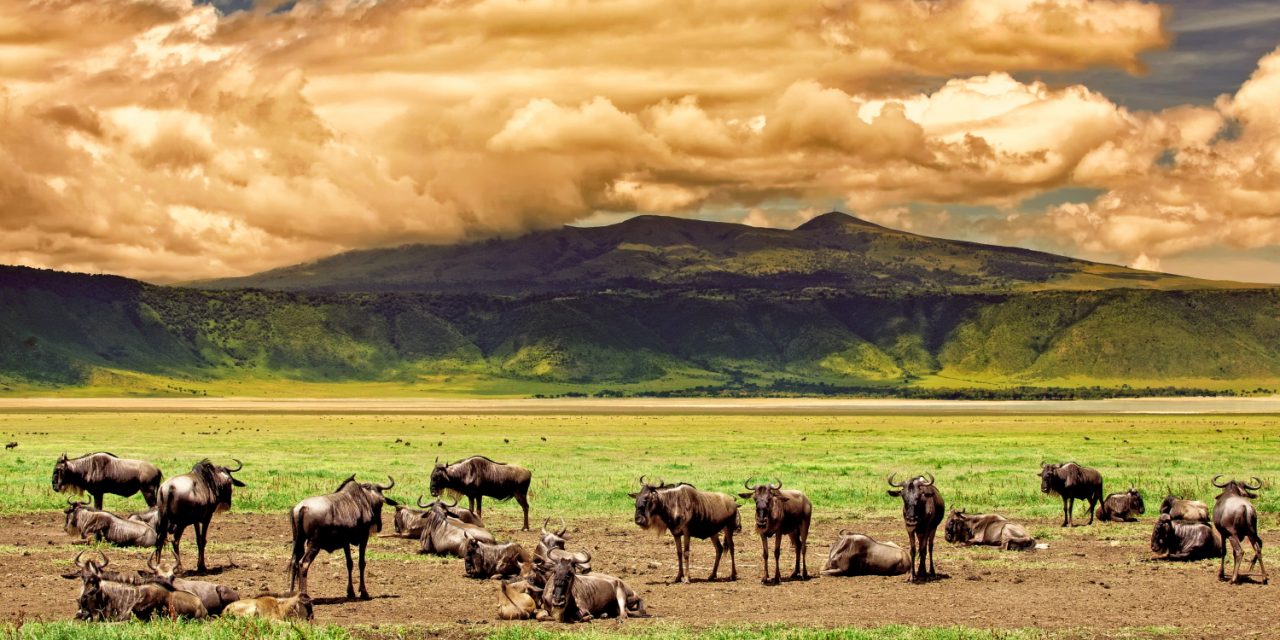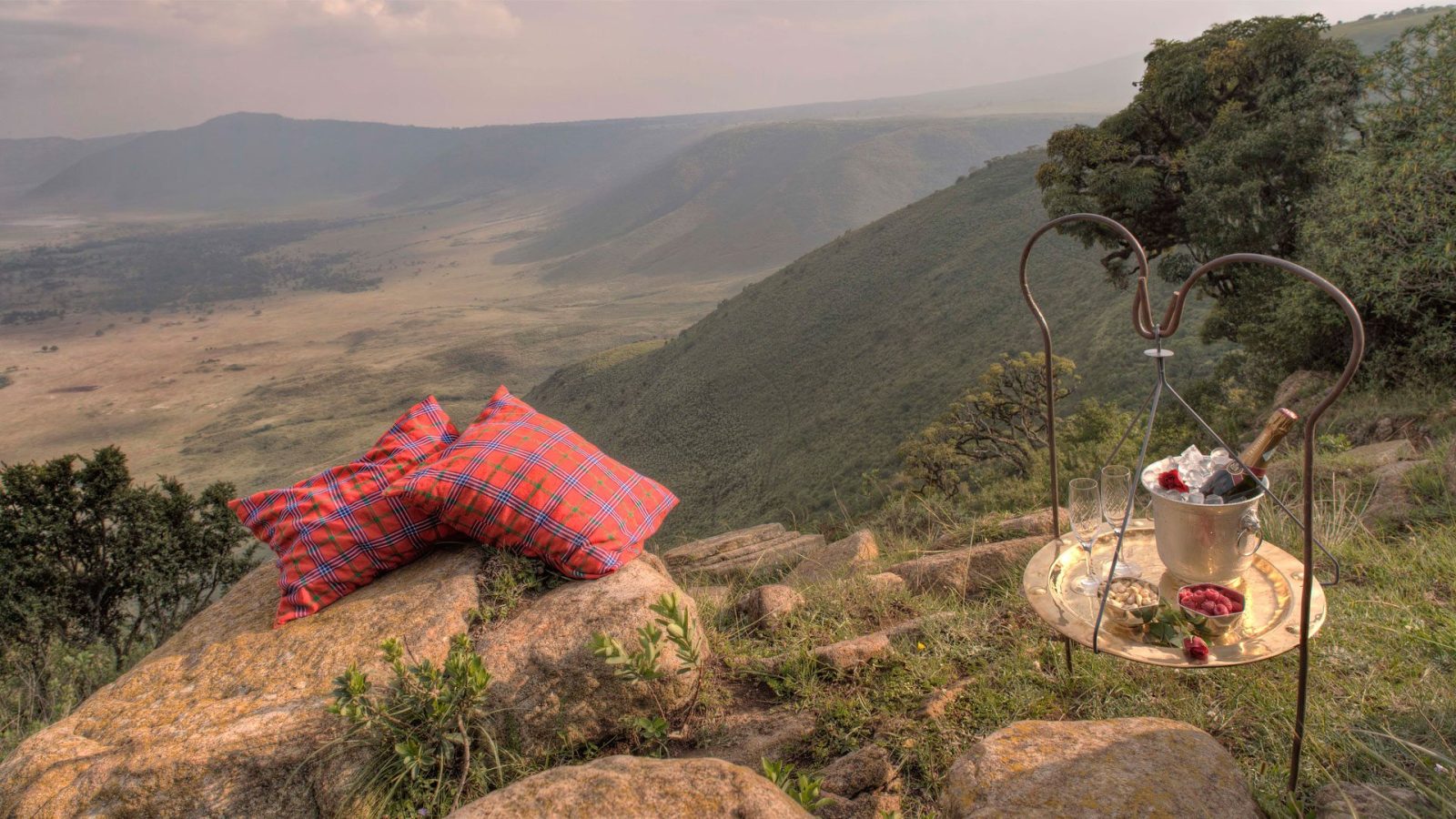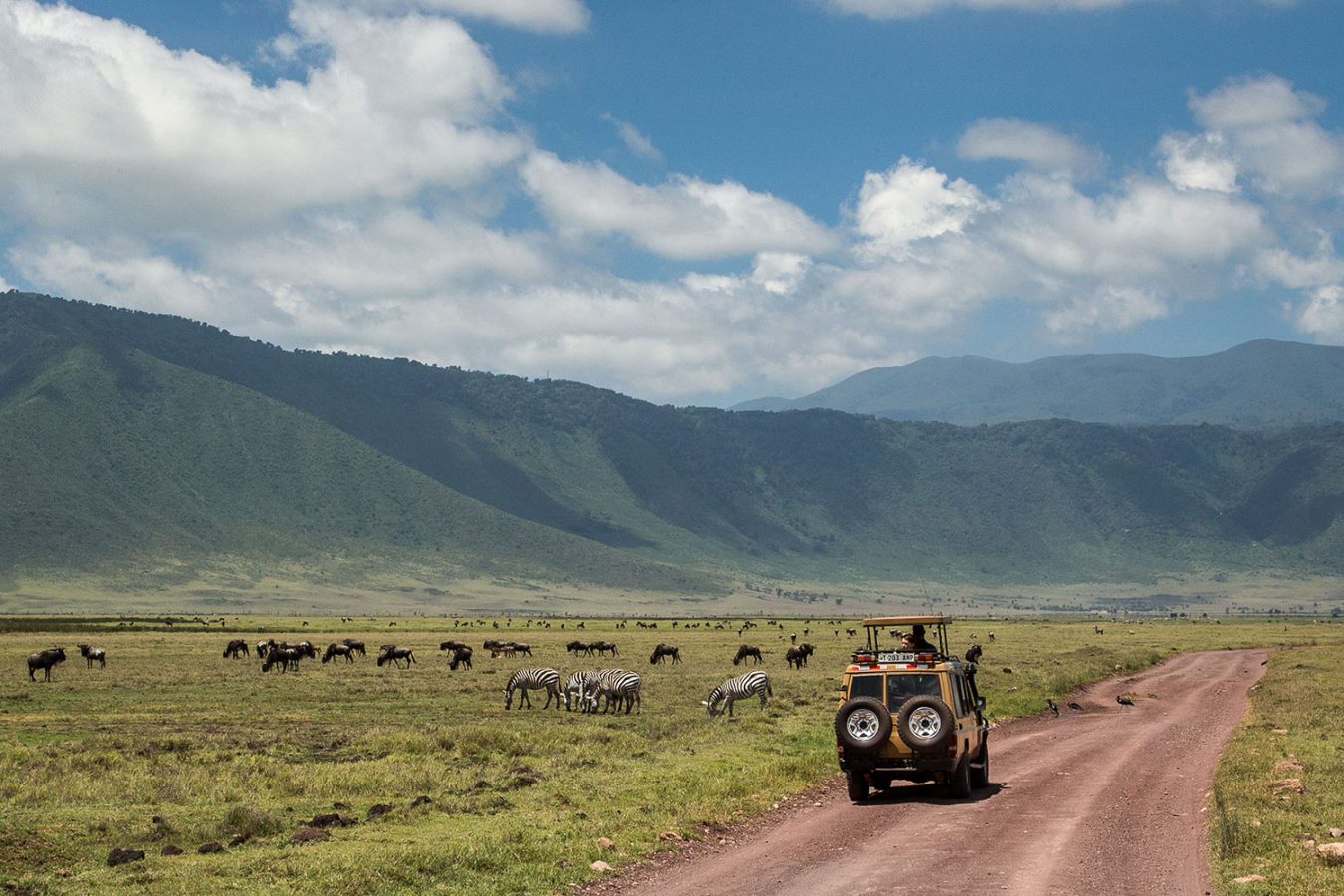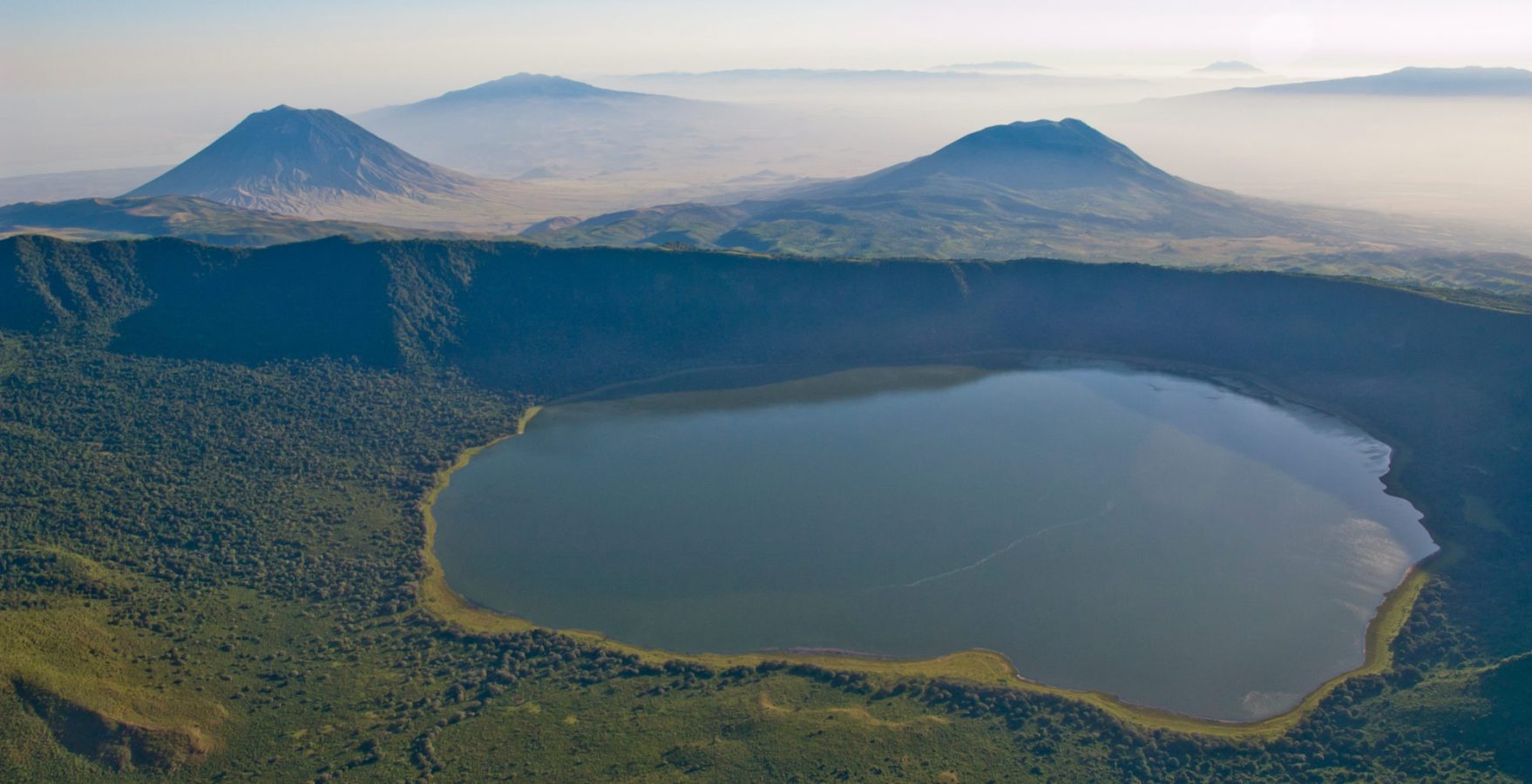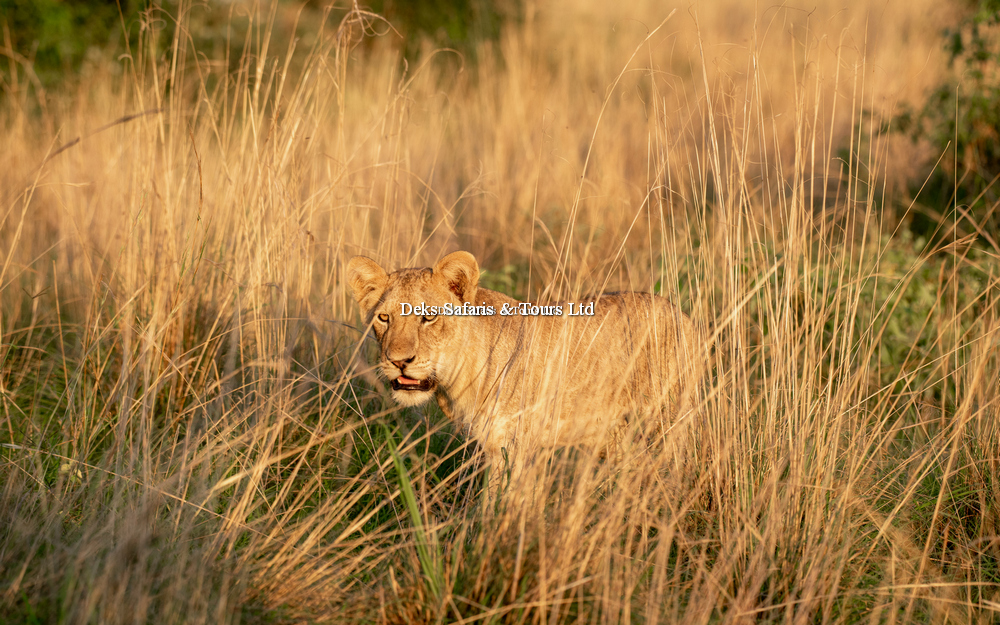Olduvai Gorge Tanzania – All You Need to Know BEFORE You Go (with Photos & Videos)
Olduvai Gorge, located in the eastern Serengeti Plains in northern Tanzania, is one of the most important paleoanthropological sites in the world. The gorge is often referred to as the “Cradle of Humankind” because of the significant discoveries of early hominid fossils and stone tools that have been made there.
It gained international fame when it was first explored by paleoanthropologists Louis and Mary Leakey in the 1930s. The Leakeys, along with their son Richard, made several groundbreaking discoveries of hominid fossils and ancient tools that provided important insights into human evolution.
The Gorge remains a crucial site for paleoanthropologists and archaeologists studying the origins and evolution of early humans. The discoveries made at this site have played a pivotal role in shaping our understanding of human prehistory.
What is the Location of Olduvai Gorge?
Olduvai Gorge is located in the eastern part of the Serengeti Plains in the Great Rift Valley of East Africa. It is situated in northern Tanzania, near the Ngorongoro Crater and the southern border of the Serengeti National Park. The coordinates of Olduvai Gorge are approximately 2.9774° S latitude and 35.2269° E longitude. The Gorge is part of the Ngorongoro Conservation Area and holds great significance as a paleoanthropological site, contributing to our understanding of human evolution.
What to Adventure at Olduvai Gorge Tanzania?
Visiting Olduvai Gorge in Tanzania offers a unique adventure for those interested in paleoanthropology, archaeology, and the history of human evolution. Here are some aspects of the Olduvai Gorge adventure:
Explore the actual excavation sites where significant hominid fossils and stone tools were discovered by the Leakeys and other researchers. While you may not be able to participate in active excavations, guided tours provide insights into the history and significance of the finds.
Visit the Olduvai Gorge Museum and Visitor Center, which provides an educational experience about the discoveries made in the area. The museum exhibits fossils, artifacts, and information about human evolution, making it a valuable resource for understanding the site’s importance.
Before planning your adventure to Olduvai Gorge, it’s advisable to check with Deks Tours for the latest information on tours, accessibility, and any regulations in place.
Paleoanthropological Sites
Paleoanthropological sites are locations where the remains of early human ancestors, hominids, and other prehistoric creatures have been discovered. These sites are crucial for understanding the history of human evolution and provide valuable insights into the behaviors, lifestyles, and physical characteristics of our ancestors.
Olduvai Gorge is often referred to as the “Cradle of Humankind.” It has yielded numerous hominid fossils and stone tools, including those of Homo habilis and Australopithecus boisei. The discoveries at Olduvai Gorge have played a key role in shaping our understanding of early human evolution.
Located not far from Olduvai Gorge, Laetoli is known for the discovery of hominid footprints dating back approximately 3.6 million years. These footprints provide evidence of early hominids walking upright.
These sites contribute to the ongoing study of human evolution, helping researchers piece together the puzzle of our ancestral past. Visiting some of these locations or learning about their discoveries can provide a fascinating glimpse into the history of our species.
Olduvai Gorge Museum and Visitor Center
Olduvai Gorge has a museum and visitor center that serves as an educational facility providing information about the archaeological and paleoanthropological discoveries made in the area. The Olduvai Gorge Museum and Visitor Center is a crucial destination for those interested in learning about the history of human evolution and the significance of Olduvai Gorge.
The Olduvai Gorge Museum and Visitor Center is located near the archaeological site of Olduvai Gorge in the Ngorongoro Conservation Area in northern Tanzania. The museum features exhibits that showcase fossils, artifacts, and geological findings from Olduvai Gorge. These exhibits provide insights into the evolution of early humans and the rich archaeological history of the region.
Informational displays and panels offer explanations about the geological formations of the gorge, the different hominid species discovered, and the tools used by early humans.
Before planning a visit, it’s advisable to check for the latest information on operating hours, admission fees, and any special events or exhibits. The Olduvai Gorge Museum and Visitor Center contribute to the broader effort of making scientific knowledge about human evolution accessible to the public.
Educational Tours
Educational tours to paleoanthropological sites like Olduvai Gorge can be fascinating and enriching experiences. These tours are designed to provide participants with in-depth knowledge about the history of human evolution, archaeological discoveries, and the significance of the site. Tours are typically led by knowledgeable guides who specialize in paleoanthropology or archaeology. These guides can provide detailed explanations of the geological formations, hominid fossils, and artifacts found at the site.
Participants learn to interpret the layers of sediment and the significance of different archaeological strata. Guides explain how these layers represent different time periods and provide insights into the changing environments and hominid adaptations.
Educational tours often include visits to on-site museums or visitor centers where participants can see fossil exhibits, including replicas or original artifacts. These exhibits help illustrate the types of hominids that lived in the area.
If you’re interested in participating in an educational tour to Olduvai Gorge or a similar site, it’s recommended to check with Deks Tours current offerings and availability. Always ensure that the tour aligns with your interests and educational goals.
Scenic Views of Olduvai Gorge
Olduvai Gorge, in addition to its rich paleoanthropological significance, offers stunning scenic views of the surrounding landscape. The gorge is set within the eastern Serengeti Plains, and its geological formations, coupled with the vastness of the Serengeti, create a picturesque setting. The geological formations of Olduvai Gorge itself are fascinating. The steep-sided ravine exposes layers of sedimentary deposits, showcasing the passage of time and the geological history of the region.
Olduvai Gorge is situated in the Serengeti ecosystem, known for its expansive grasslands, acacia woodlands, and diverse wildlife. The panoramic views from the gorge allow you to take in the beauty of the Serengeti Plains.
While the primary focus of Olduvai Gorge is its paleoanthropological significance, the surrounding area is home to a variety of wildlife. You may catch glimpses of animals such as wildebeest, zebras, giraffes, and various bird species.
When visiting Olduvai Gorge, it’s advisable to take some time to simply absorb the beauty of the natural surroundings. Whether you’re there for the scientific insights or the sheer aesthetic pleasure, the scenic views of Olduvai Gorge and the Serengeti Plains are bound to leave a lasting impression.
Ngorongoro Conservation Area
The Ngorongoro Conservation Area (NCA) is a UNESCO World Heritage Site and a prominent conservation area in northern Tanzania. It is renowned for its diverse ecosystems, rich wildlife, and the Ngorongoro Crater, which is often referred to as a natural wonder. The Ngorongoro Conservation Area is situated in the Crater Highlands of Tanzania. It spans an extensive area, encompassing grasslands, woodlands, and savannahs.
The Ngorongoro Crater is a large volcanic caldera, formed by the collapse of a volcano. It is approximately 610 meters (2,000 feet) deep and covers an area of about 260 square kilometers (100 square miles). The crater is a unique and self-contained ecosystem, home to a high concentration of wildlife.
The Ngorongoro Conservation Area supports a diverse array of wildlife, including the “Big Five” (lion, elephant, buffalo, leopard, and rhinoceros). Other species, such as wildebeest, zebras, hippos, and various antelope species, also thrive in the region.
The Ngorongoro Conservation Area offers a blend of breathtaking landscapes, abundant wildlife, and cultural richness, making it a must-visit destination for nature enthusiasts, wildlife photographers, and those interested in human evolution.
Cultural Interaction around Olduvai Gorge
Cultural interaction around Olduvai Gorge often involves engaging with the Maasai people, who are indigenous to the Ngorongoro Conservation Area where Olduvai Gorge is located. The Maasai are known for their rich cultural traditions, distinctive clothing, and pastoral way of life.
Some tours and cultural programs provide opportunities to visit Maasai villages near Olduvai Gorge. In these villages, visitors can learn about Maasai traditions, customs, and daily life. Maasai communities often showcase their traditional dances and music. Visitors may have the chance to witness energetic dances, listen to Maasai songs, and learn about the cultural significance of these performances.
A Boma is a traditional Maasai dwelling. Visitors might get the chance to explore a Maasai Boma, learn about its construction, and understand its role in Maasai family life. Maasai artisans create distinctive beadwork, jewelry, and other crafts. Visitors can engage with Maasai artisans, observe their craftsmanship, and even purchase authentic Maasai souvenirs.
Cultural interaction around Olduvai Gorge not only provides visitors with a deeper appreciation for the local heritage but also contributes to the sustainable development of the community. Responsible tourism practices ensure that cultural interactions are respectful, mutually beneficial, and contribute to the well-being of the local population.
Photography Expeditions at Olduvai Gorge
Photography expeditions at Olduvai Gorge can be a rewarding experience, given the stunning landscapes, archaeological sites, and cultural elements present in the region. Use the expansive and diverse landscapes around Olduvai Gorge as a backdrop for your photographs. From the geological formations of the gorge to the vast Serengeti Plains, there are plenty of opportunities to capture the beauty of the natural environment.
The Ngorongoro Conservation Area, including Olduvai Gorge, is home to a wide variety of wildlife. Be prepared to capture images of animals such as wildebeest, zebras, lions, and various bird species. The Ngorongoro Crater offers excellent opportunities for close-up shots of wildlife.
Document the archaeological sites within Olduvai Gorge, showcasing the layers of sediment, fossil discoveries, and any ongoing excavations. Use photography to tell the story of the scientific significance of the area.
Remember to check and follow any photography guidelines or regulations set by the authorities in the Ngorongoro Conservation Area. Additionally, having the right equipment, including a good camera, lenses, and accessories, can contribute to the success of your photography expedition.
When to Visit Olduvai Gorge?
The best time to visit Olduvai Gorge depends on various factors, including weather, wildlife activity, and personal preferences.
Dry Season (June to October)
The dry season is considered the best time to visit Olduvai Gorge. It typically runs from June to October. During this period, the weather is dry, and the skies are clear, making it ideal for wildlife viewing and photography. The lack of vegetation allows for better visibility of animals, including those around Olduvai Gorge and the Ngorongoro Crater.
June to October is also the migration season in the Serengeti, which is nearby. The migration involves vast herds of wildebeest and other animals, providing a spectacular wildlife spectacle.
Short Rainy Season (November to December)
The short rainy season occurs from November to December. While there may be occasional rain showers, it is generally a good time to visit as the landscape is lush and green. This period is still favorable for wildlife viewing, and the vegetation can add a different dimension to your photographs.
Long Rainy Season (March to May)
The long rainy season takes place from March to May. During this time, heavy rains can make some areas challenging to access, and wildlife may be more dispersed. This is considered the low season for tourism, and some lodges and camps may close. However, it can be a good time for birdwatching and enjoying the rejuvenation of the landscape.
It’s important to note that weather patterns can vary, and wildlife movements are not strictly predictable. Always check with Deks Tours for the latest information and to plan your visit based on your preferences and the specific conditions of the time.
How to Get to Olduvai Gorge?
Getting to Olduvai Gorge involves traveling to the Ngorongoro Conservation Area in northern Tanzania.
Fly to Tanzania: The primary international gateway to Tanzania is Julius Nyerere International Airport (DAR) in Dar es Salaam. Alternatively, Kilimanjaro International Airport (JRO) and Abeid Amani Karume International Airport (ZNZ) in Zanzibar are also common points of entry.
Travel to Arusha or Kilimanjaro: Arusha is a common starting point for safaris in northern Tanzania, including visits to Olduvai Gorge. You can either fly directly to Arusha Airport (ARK) or take ground transportation from Dar es Salaam or Kilimanjaro International Airport.
Ground Transportation to Ngorongoro Conservation Area: From Arusha, you can arrange for ground transportation to the Ngorongoro Conservation Area. This can be done through guided safari tours, private transfers, or public transportation.
It’s important to plan your visit well in advance, especially if you’re coordinating multiple elements such as flights, ground transportation, and accommodations. Consider working with Deks Tours who are experienced in organizing safaris and visits to Olduvai Gorge. Always check the latest travel advisories and entry requirements for Tanzania before your journey.
A List of Safari Lodges around Olduvai Gorge
There are several safari lodges and camps in the vicinity of Olduvai Gorge, situated within or near the Ngorongoro Conservation Area in Tanzania. Keep in mind that the availability of lodges and their details may change, so it’s advisable to check with reliable sources or travel agencies for the most up-to-date information. Here’s a list of some lodges around Olduvai Gorge:
- Ngorongoro Serena Safari Lodge
- Ndutu Safari Lodge
- Dunia Camp
- Serengeti Pioneer Camp
- Kubu Kubu Tented Lodge
- Serengeti Migration Camp
- Lemala Ngorongoro Tented Camp
- Nasikia Mobile Camp
- Kifaru Lodge
- Thomson Safari Camp
When planning a Tanzania safari around Olduvai Gorge, it’s crucial to consider the specific location, amenities, and experiences offered by each lodge to match your preferences and budget. Additionally, always check for the latest reviews and availability when making reservations. Keep in mind that the status and offerings of lodges may change over time.
Luxury Africa Tours & Holidays – Deks Safaris and Tours Ltd
- 6 Days Uganda Kenya Tour
- 7 Days Rwanda Uganda Tour
- 8 Days Kenya Uganda Luxury Safari
- 8 Days Kenya Uganda Tour
- 9 Days Kenya Uganda Safari
- 10 Days Kenya Uganda Safari
- 10 Days Uganda Kenya Tanzania Safari
- 10 Days Rwanda Kenya Tanzania Safari
- 11 Days Kenya Uganda Rwanda Safari
- 11 Days Kenya Uganda Safari
- 11 Days Uganda Kenya Zanzibar Safari
- 11 Days Rwanda Kenya Safari
- 12 Day Kenya Uganda Rwanda Safari
- 13 Days Uganda Kenya Tanzania Safari
- 14 Days Across Africa Safari
- 14 Days Rwanda Tanzania Safari
- 15 Days Kenya Rwanda Tour
- 16 Days Kenya Uganda Safari

